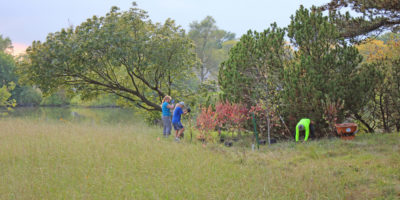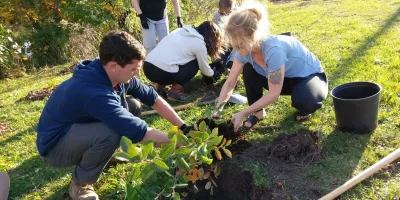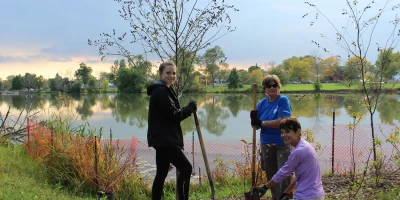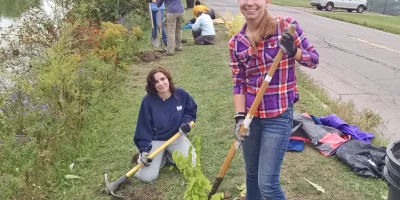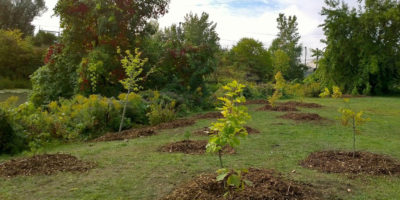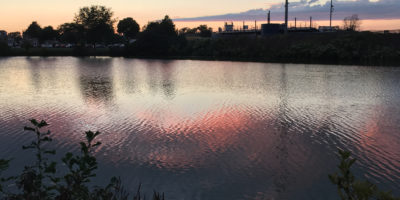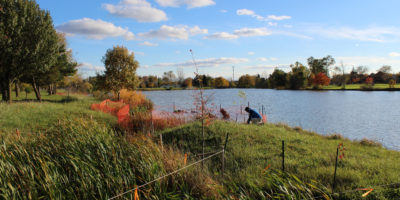The Gill Creek and Hyde Park Corridor continues to be a growing area of focus and investment for Buffalo Niagara Waterkeeper.
There are completed, ongoing and future projects for which grant applications are pending in living shoreline restoration, riparian buffers, ecosystem restoration, fish passage, plantings and invasive species removal, harmful algal bloom monitoring, and outreach and education for the Gill Creek and Hyde Park community.
In addition to the environmental benefits, these projects together will translate to a significant positive economic impact on the corridor.
Partners
In partnership with the City of Niagara Falls, NY and with funding from the US Forest Service Great Lakes Restoration Initiative,
Buffalo Niagara Waterkeeper mobilized volunteers to plant over 1,000 trees and shrubs during a three year period along Gill Creek to strengthen the riparian corridor.
This project offered volunteers a direct way to help improve the well-being of their communities and local watershed. Plantings implemented during this project are one step towards restoring the water quality and aesthetic beauty of Gill Creek while also enhancing recreational opportunities.
US Forest Service Great Lakes Restoration Initiative
City of Niagara Falls
Location
Gill Creek is in Hyde Park in Niagara Falls, NY.
History
Gill Creek suffers from a history of pollution from industrial sources and storm water runoff. This present pollution made it an eye sore for visitors and a poor habitat for wildlife. This project improved the water quality and the beauty of Gill Creek while enhancing the creek’s recreational uses.
In the Weeds
The planting of native trees and shrubs creates a buffer along the creek’s shoreline. The new trees and shrubs act as a filter to remove some litter and pollutants before they reach the creek. In addition, plant root systems strengthen the shoreline and provide shade to deliver a suitable water temperature for fish populations. Riparian zones create landscapes that are more biodiverse, healthy, eye-pleasing and that will grow stronger as time goes on.
Riparian Buffer
A wide strip of native trees, shrubs, and grasses, that helps improve and protect water quality, create shade keeping water cooler, link valuable wildlife corridors, reduce bank erosion and sedimentation, capture nutrients and pollutants, and support plant and animal diversity.
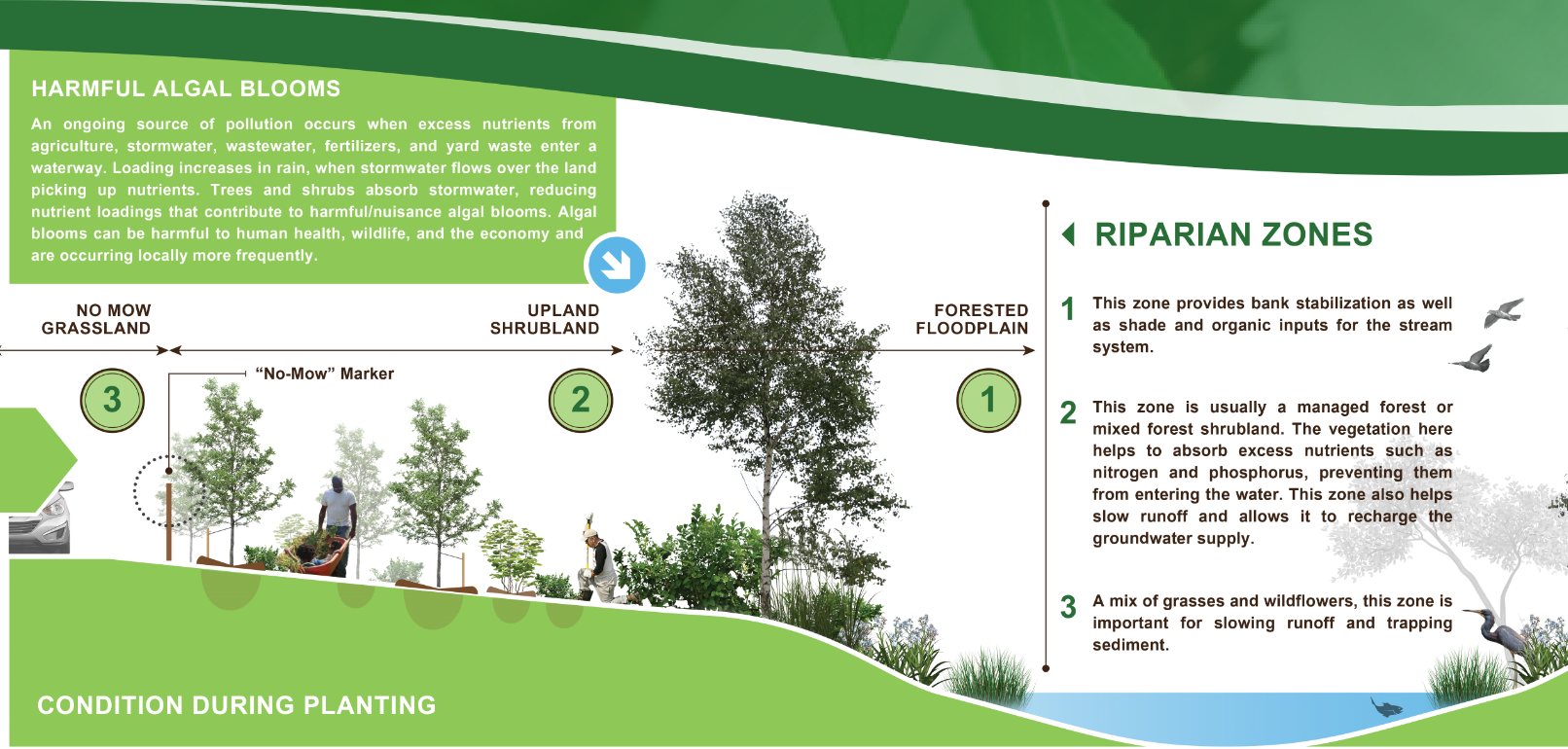
Contact |
Community Building
The Gill Creek Restoration project gave volunteers a direct way to help improve the well-being of their communities and local watershed. But the work isn’t done! We need citizens to be good stewards of the water.
600
9
1125
26,810




